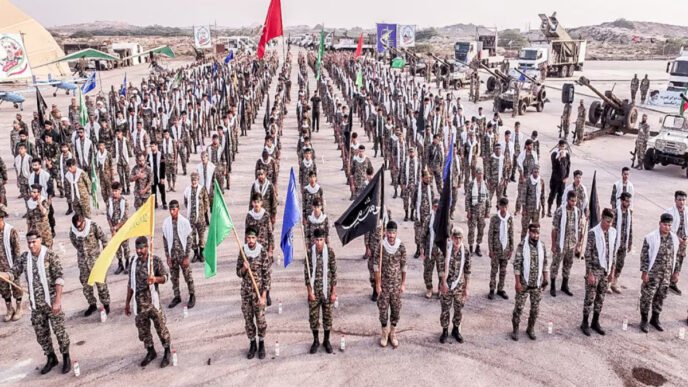Iran’s missile arsenal: Types and capabilities to target Israel
In a major escalation of ongoing conflicts between Iran and Israel, Iran has launched a large-scale missile attack against Israel, firing over 200 missiles in a coordinated offensive that has resulted in multiple casualties and injuries among Israeli civilians and milit personnel.
According to reports from Israel and international sources, the missile barrage was part of a calculated milit operation. The attack has already caused significant damage to infrastructure and has raised concerns about the potential for broader regional conflict.
Iran’s official news agency, ISNA, confirmed that the Iranian milit possesses at least nine different types of ballistic missiles, with speeds ranging from approximately 6,125 km/h to 17,151 km/h. These sophisticated missile systems are capable of arraying a variety of warheads, including conventional, biological, chemical, and nuclear payloads. Their ranges v considerably, with some designed for short-range strikes and others capable of intercontinental reach.
Here are some details of the Missiles:
THE SHAHAB SERIES ( SHAHAB 3 AND 4)
The Shahab series comprises a family of ballistic missile systems primarily developed by Iran, with some models inspired by or based on foreign designs.
Notably, the Shahab-3 is an intermediate-range ballistic missile (IRBM) with a range of approximately 1,000 to 1,300 kilometers (620 to 810 miles). Its design is based on the North Korean Nodong-1 missile, featuring modifications to suit Iranian requirements. The Shahab-3 is capable of carrying both conventional and nuclear warheads, with variants powered by solid or liquid fuel.
The Shahab-4 is envisioned as an extension or derivative of the Shahab-3, offering increased range and payload capacity; however, as of the latest available information, the Shahab-4 remains largely conceptual or in the developmental stage, with limited open-source data confirming its operational deployment.
EMAD MISSILE
Emad Missile was launched on 15 October 2025, Emad was the first Iranian missile that can be controlled and guided until it hits its target and has a 1,700 km range, 500 m accuracy, and a 750 kg payload capacity.21 Given its range of 1,700 km (which other reports concur with), the Emad does not qualify for a “long-range” classification, such as an IRBM or ICBM.
SEJJIL MISSILE
The Sejjil missile is a class of Iranian medium-range ballistic missiles that utilize solid-fuel technology. Sejjil offers increased accuracy and reliability compared to older liquid-fuel variants. Its solid-fuel propellant enables quicker launch readiness, easier storage, and safer handling. Sejjil has an estimated range of approximately 2,000 kilometers (around 1,240 miles) and can carry both conventional and nuclear warheads. Its mobility is enhanced by road-mobile launchers, providing strategic flexibility and making it a formidable component of Iran’s missile arsenal.
FATTAH MISSILE
Fattah is a hypersonic ballistic missile with a range of 1,500 kilometers and a velocity of Mach 15, which is fifteen times the speed of sound, equivalent to approximately 18,522 km/h. The missile measures 12 meters in length and has the capability to carry a payload of 200 kilograms of explosives. Its advanced speed and range make it a significant component of modern missile technology.
GADR MISSILE
The Ghadr missile was introduced in 2005 and is a two-stage rocket featuring a liquid-fueled first stage and a solid-fueled second stage. It is produced in three variants: Ghadr-S with a range of 1,350 km, Ghadr-H with a range of 1,650 km, and Ghadr-F with a range of 1,950 km. The missile measures between 15.86 and 16.58 meters in length and has an airframe diameter of 1.25 meters. Its weight ranges from 15 to 17.5 tons.
KHEIBAR SHEKAN
Kheibar Shekan missile is a medium-range ballistic missile engineered for strategic strikes, showcasing notable effectiveness in past engagements. With an estimated operational range of approximately 1,450 kilometers (around 900 miles), it possesses the capability to reach distant targets with precision. The missile is versatile in its payload options, capable of carrying conventional warheads and potentially non-conventional ones as well, enhancing its lethality and strategic value.
HAJ QASEM
Haj Qasem was unveiled in August 2020, showcasing its formidable capabilities. The missile boasts a range of 1,400 kilometers (870 miles), enabling it to strike targets at considerable distances. It is equipped with a warhead weighing 500 kilograms (1,100 pounds).
PAVEH MISSILE
Paveh is a part of the Soumar cruise missile family, which was unveiled in 2015 with the first missile of the family being the Soumar which had a range of 700 km.
GHADR MISSILE
The Ghadr-110 is a medium-range ballistic missile developed by Iran, designed to enhance the country’s missile capabilities. It boasts a range of approximately 1,800 to 2,000 kilometers, allowing it to target strategic locations within this distance.













